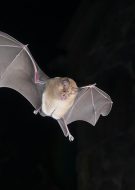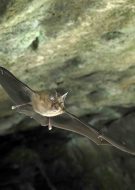Please filter by different types of publications
All Bats

Plecotus kolombatovici Ðulić, 1980 was given full species status in 2008. However, it was still being combined with a sister species P. gaisleri until 2020, which caused confusion in determining its true distribution and status. Studies of the roosting and foraging of this species are very limited, and little has been reported on its echolocation calls.
In this paper, we review the history of the identification of this species, its current distributional data, and former studies of its roosting and foraging ecology. In addition, we present new data on roosting, foraging and echolocation of this species from the Croatian island of Lokrum, and discuss the status and conservation needs of P. kolombatovici more widely.
Key words: Chiroptera, Plecotus kolombatovici, ecology, echolocation, Lokrum island
Photo: Kolombatovici’s bat ©Daniel Hargreaves
Download
Using a Before-After-Control-Impact phantom road experimental
design, we examine the impacts of traffic noise on bat activity and feeding behaviour.

This paper examine functional connectivity of greater horseshoe bats (Rhinolophus ferrumequinum) at a local scale using Circuitscape software.
Download
According to the data of the EUROBATS Agreement, a deserted system of World War Two defensive tunnels in northwest Poland is now ranked in top 10 largest bat hibernation sites in Europe with numbers of hibernating bats exceeding 39,000 individuals in some years. This paper highlights the research over 45 years to survey the bat species using these underground tunnels.
Using photographs to count the large clusters of hibernating bats. Photo: ©Henry Schofield
Download